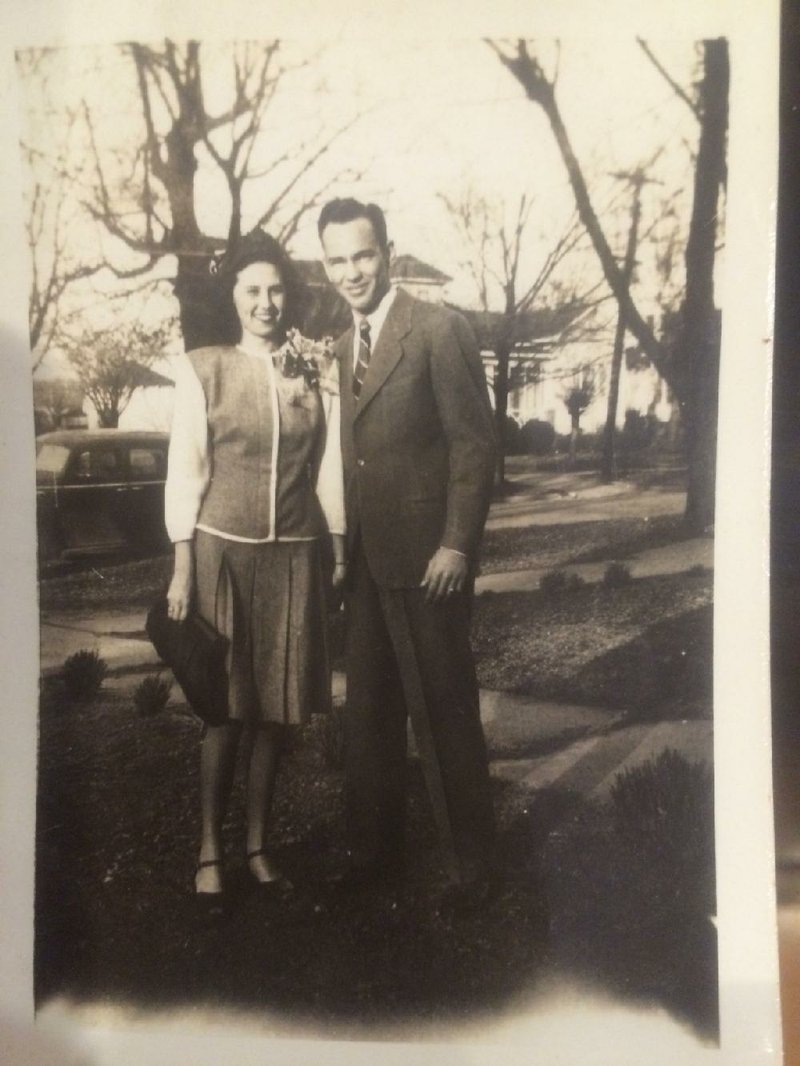John Robbins didn't have a milkshake the day he met Margaret Stringer at the drugstore in Morrilton in 1943, but he patiently waited while she did.
She didn't hurry -- after all, she didn't even know he was there.
The first time I saw my future spouse:
She says: “He was getting into the backseat of my car. To me he was a handsome young man — and he was stubborn.”
He says: “I thought that she was the prettiest girl I’d ever seen. And she still is.”
On our wedding day:
She says: “It was rush, rush, rush. We got married at 5 in the afternoon.”
He says: “I was nervous. I don’t know if I was just excited, actually, or nervous. It was so long ago.”
My advice for a lasting marriage is:
She says: “You have to have patience.”
He says: “Just never start an argument — we have never had a fight, we’ve never had any problems, so it’s hard to explain — a lot of times we don’t agree on everything, but we can always work it out.”
John grew up in Red Level, Ala., and joined the U.S. Army right after he finished high school. He was sent to Morrilton, Margaret's hometown, with the 393rd Engineering Brigade in the spring of 1943 to help with flooding along the Arkansas River. He was a medic and thus didn't have a lot to do unless someone got hurt.
"I spent a lot of time in town," he says.
That's where he was the day Margaret and her cousin drove through on their way to the drugstore that served as a hangout. He watched as they parked and went inside.
"I didn't see him," Margaret says. "He said he was standing on the street corner. We went in and took our time visiting."
He thought she was the prettiest girl he had ever seen, with long, dark hair and a slender build. She seemed friendly and outgoing, too, and he couldn't stand the thought of not knowing her.
John waited about an hour, and when she finally walked out he found himself too anxious to approach her. At the last minute he ran and jumped into the backseat of her car.
"That's when I saw him," says Margaret, who was annoyed rather than afraid of the young man in uniform who had forced his way into her car. "I told him to get out about a dozen times. I couldn't make him get out."
It's true, he admits.
"She would say, 'We've got to go home now.' And I would change the subject, and we would talk about something else. Finally I said, 'Well, let's go,'" John says.
And go they did to the home Margaret shared with her parents and her sister. John went inside to meet them when they arrived, and while they were surprised, they were also welcoming.
"My mom was the sweetest woman in the world and they were appreciative of him being in the service," says Margaret, who in short order ushered him back into her car and drove him down the road to his military camp.
He showed up at her house every day after that, and when she wasn't there he knew to find her at the grocery store where she worked in town. He would wait there until she finished her shift and then go home with her for a longer visit.
Because John was in the Army, he knew he could have been reassigned at any time. "I thought 'I think I'm going to have to come back to get her,'" John says.
He was in Morrilton for a month before being reassigned.
They wrote to each other every day after he left, including the days he spent serving overseas; he was shipped out shortly after he left Morrilton to go back to Alabama.
John wrote to her, and he wrote to his mother about her. His mother wrote to Margaret to say how much she appreciated her being nice to John. They began corresponding as well, because John didn't write to his mother as often as he wrote to Margaret.
He made his way back to Morrilton for a visit as soon as he was back on American soil, staying with Margaret's older, married sister while he was in town.
"The last time he came he said, 'If you don't marry me this time I'm not coming back anymore,'" she says. "Of course I told him yes, because I wanted him to come back."
They exchanged vows about a week later, on March 2, 1946, in the manse of the preacher of First Presbyterian Church of Morrilton. It was a small affair, planned in just slightly more than the four-day waiting period required to get a marriage license.
"When we married, I hadn't met any of his folks. We went home to my house and changed clothes and went to Little Rock," Margaret says. "We spent the night, got up the next morning and caught a bus to Alabama."
John and Margaret spent a month in Red Level with John's family, under the same roof as John's two brothers and his sister-in-law, before returning to Morrilton. He sold insurance in military camps for years, traveling around the country to do his job and often taking Margaret with him when their children were young.
The Little Rock couple have two daughters -- Trisha Rowe and Tracy Cotton, both also of Little Rock, as well as four grandchildren and 10 great-grandchildren.
Seventy-one years is a long time to be sure, but the years have flown by, Margaret says.
"You have to love each other, which we still do," she says. "We tell each other every night before we go to sleep."
If you have an interesting how-we-met story or if you know someone who does, please call (501) 425-7228 or email:
kdishongh@sbcglobal.net
High Profile on 03/12/2017

